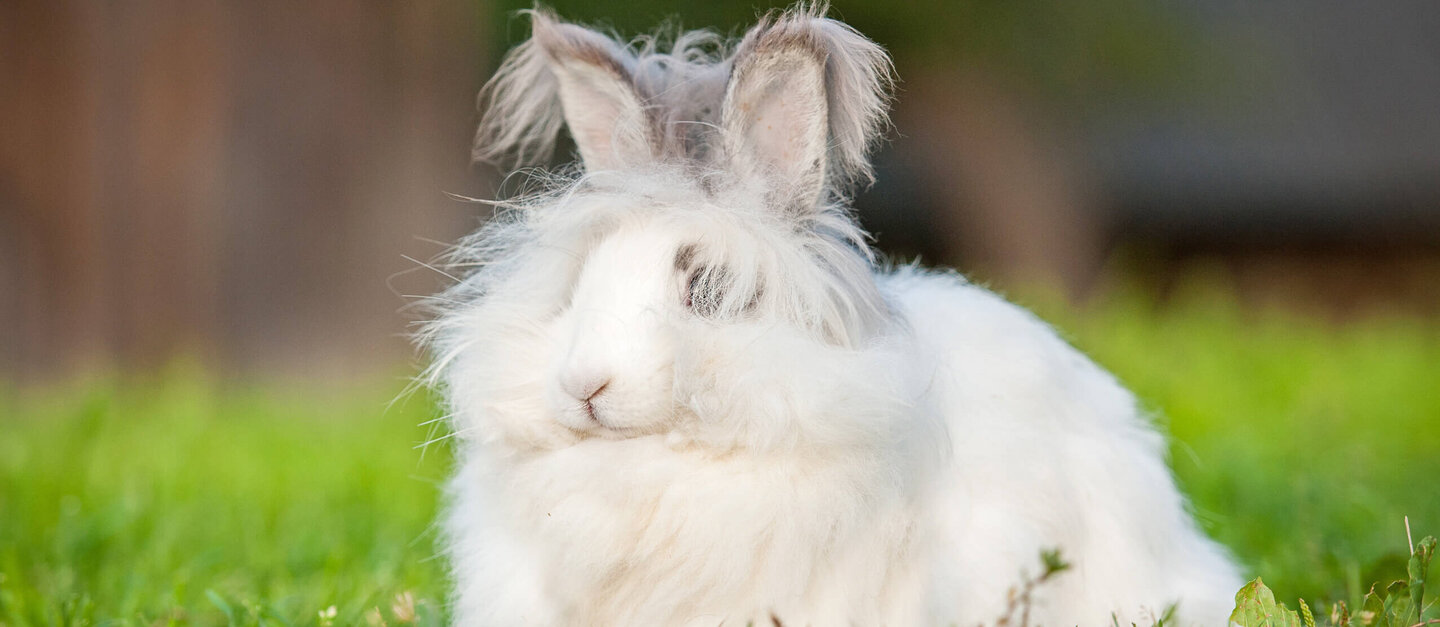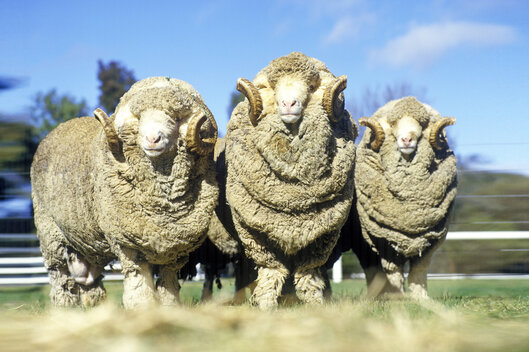Angora rabbits suffer from breeding and painful pluckingWhy you should not buy angora wool
Hats, scarves, sweaters and underwear made from angora wool are considered warm and cozy. However, around 90 percent of the angora wool traded worldwide comes from angora rabbits from China.1 There they are usually kept alone in small cages and shorn or painfully plucked several times a year.
Angora rabbits live alone in small cages
Angora rabbits are bred to such an extreme that they grow particularly thick and unnaturally long fur. This is why their fur tangles or sticks together so quickly. To prevent this, the industry, 90 percent of which is located in China alone, often keeps the otherwise sociable animals permanently alone. This is because conspecifics might nibble on or soil the profitable fur. The rabbits, which are very active by nature, live in cages that are far too small, without soft litter on wire or plastic grids. The small animals injure their sensitive soles and hind legs on these. In the tiny cages, they are also unable to hop, stretch out, dig or do maneuvers.
Angora wool is often painfully plucked
As soon as Angora rabbits are six to eight weeks old, they begin to suffer for their wool. The animals are shorn or forcibly plucked three to four times a year. This causes them massive stress - the plucking in particular is very painful. The staff tie the animals to tables or clamp them between their legs and sometimes tear them for up to two hours per rabbit2 the hair out. Afterwards, they are naked and no longer protected from the cold without the angora wool. The temperature shock and the enormous stress can lead to illness or even death: When Angora rabbits die prematurely in industrial husbandry, this usually happens in the first week after shearing.
Angora rabbits suffer from the consequences of extreme breeding
The long fur of Angora rabbits is valuable to the industry. The animals themselves suffer from the Angora wool and the excesses of breeding, which is only geared towards this. They can no longer keep their fur clean and groomed on their own. The skin underneath can easily and painfully become inflamed. Fly maggots can also infest the animals. Angora rabbits can withstand less heat and often have gastrointestinal problems when they eat hair and form balls in their stomach. If the long fur becomes matted and knotted, they find it more difficult to move freely. Sometimes this even means that the animals cannot eat properly.
How you can help angora rabbits
Do not buy clothing or accessories made from angora wool. There are labels for products made from angora wool that advertise that they comply with European animal welfare standards. But even then, the animals usually have to live individually in small cages and endure cruel shearing. From an animal welfare perspective, there is no commercially suitable method of obtaining wool from Angora rabbits without animal suffering.
Share your criticism with the trade and manufacturers of angora products. This will draw attention to the issue and signal to them that you want soft and warm fashion without animal suffering.
Choose animal-friendly alternatives. For example, natural plant fibers such as cotton, linen, sisal, hemp or jute. Also suitable if they are ideally recycled in an environmentally friendly way: Synthetic fibers such as elastane, polyester, polyamide or polyethylene.
Do not keep angora rabbits privately. Even away from the large industrial farms with their small individual cages, the animals suffer from the consequences of extreme breeding, which is aimed solely at the long fur. Private owners also have to constantly groom the fur of Angora rabbits and shear them regularly. This can also stress and strain the animals.
This is what the German Animal Welfare Federation demands
We demand that the industry may only use the wool of Angora rabbits if the animals are kept in a manner appropriate to their species and behavior. This is unlikely to be economically viable and is virtually impossible in terms of husbandry. The fashion industry must therefore stop keeping angora rabbits rather than continuing to keep and treat them in the same way as before. Because they suffer massively under these conditions. Furthermore, consumers are not necessarily dependent on products made with angora wool.
The German Animal Welfare Association is calling for a legally binding regulation that clearly defines what is considered torture breeding. Not only the breeding, but also the keeping and sale of animals bred for torture should be prohibited.
Sources
¹ Discover Natural Fiber Initiative (2020). Angora. https://dnfi.org/angora-fibres [accessed 05.05.2023]
² Research results from One Voice in France from 2016 (https://www.stopangora.fr/en/home/?lang=en)




